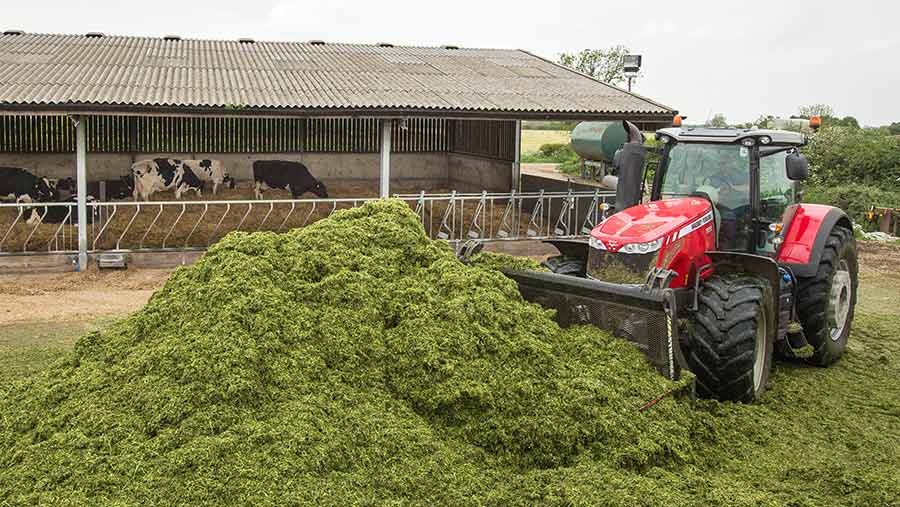Guide to farming agreements and how to set them up
 © Hero Images/Getty
© Hero Images/Getty Few farmers fully retire, but more are now choosing to step back from the day-to-day business of running a farm by bringing another person into the enterprise.
Joint ventures such as share farming are becoming more commonplace and vary according to circumstances and what each party wants from the arrangement.
Although the structures and terms of each agreement are different, an overarching principle is that both parties must bring something to the mix.
We examine three of the options with John Allen, managing partner at Kite Consulting, and Rob Hitch, partner at accountant and business adviser Dodd &Co.
1. Share farming
An arrangement between two independent businesses that share the value of the farm’s output.
There is no standard share-farming agreement – the terms are dictated by the parties involved and by what they both contribute.
The most successful are those involving individuals with complementary resources and skill sets.
What each party provides
The share owner/occupier normally provides the land, buildings, fixed equipment and fixed machinery and pays for the major maintenance of buildings and a proportion of input costs.
See also: Share farming facilitates expansion to five dairy units
The share farmer generally provides the working machinery, moveable equipment and technical ability and pays the balancing cost of inputs.
Livestock are usually held in undivided shares, but can be held in any combination – for instance, one party can hold all the shares.
Output and certain direct costs are split according to agreed allocations.
“In my opinion, it is often simpler for each party to take responsibility for specific costs such as feed or fertiliser, rather than splitting invoices between two parties,’’ says Mr Hitch.
How profits are shared
Share farmers don’t share profits – they share the income in an agreed split and pay their own costs.
Mr Hitch advises the income must be correctly reported in the respective accounts of each party.
Tax and Basic Payment Scheme (BPS) repercussions
Provided “farmer” status is maintained, inheritance tax and capital gains tax reliefs can be retained by the business owner.
The BPS usually stays with the “farmer”, safeguarding part of their income and their tax status.
Share farming provides benefits to the non-landowning partner, as they are also treated as farmers, allowing averaging claims and entitlement to herd-basis treatment of production animals.
Benefits
- While all joint ventures allow parties to alter their respective shares, share farming is perhaps the most flexible.
- A share farmer can start with a small share and gradually build an equity share, perhaps through stock or equipment ownership, although this equity depends on profitability, commodity prices, breeding stock value and land markets.
- For the business owner, it can be a useful means of releasing capital from machinery and livestock to use for alternative investments.
- It allows the owner to retain management involvement without getting involved in the day-to-day work.
- It can allow for a new enterprise to be introduced to the farm, one which the owner may not have expertise in.
Best suits…
- A farmer approaching retirement, as it allows for gradual retirement.
- A new entrant, because assets can be transferred if a better opportunity comes along.
- Someone with the necessary skills, but limited capital.
- Can work well between employer/employee because there is a shared farming philosophy.
Advice for setting up this type of agreement
- There must be a clear understanding of why both parties are entering into an agreement.
- Clear and honest discussions are required to frame expectations.
- Careful construction of the agreement is needed to ensure each party is rewarded according to their involvement, such as responsibilities, time, skills, equity and risk.
- Careful consideration is required to deal with terms and timing of payment of shared costs, and a payment for stock and machinery when the agreement ends.
- Drawing up detailed budgets for both parties and then agreeing the split of income is key so that both parties know what to expect.
- “I like the flexibility of share farming agreements and often describe them as a ‘diet partnership’, giving the benefits of partnership without joint and several liability,’’ says Mr Hitch.
2. Contract farming
A joint venture between a landowner or occupier and a contractor.
A separate bank account, often referred to as the number two account, is set up to pay for inputs such as feed, fertiliser and chemicals, and to receive income for the agreement.

© Tim Scrivener
What each party provides
Typically, the landowner or occupier provides land, buildings and a bank account with an overdraft facility.
The contractor provides labour, power and machinery.
See also: Contract farming agreement helps Welsh dairy business expand
How profits are shared
Each party takes a payment or first charge according to individual risk, although the only guaranteed payment is to the contractor.
After costs are accounted for, any surplus is shared within an agreed ratio.
Tax and BPS repercussions
It allows an individual to continue trading as a farmer with income and inheritance tax advantages.
Unlike share farming, the contractor is not farming and is therefore not entitled to two- and five-year averaging and, where stock are hired to the landowner, it isn’t possible to make a herd-basis election.
The farmer remains the owner of entitlements and is the BPS claimant, but the BPS income is usually paid into the contract farming account.
Benefits
- Cost of production is reduced significantly because existing machinery becomes surplus and is sold.
- Allows a farmer to reduce their physical input while still living in the farmhouse and running the business.
- Releases capital for other business or investment plans.
- Allows the owner to continue trading as a farmer.
- Contractors can benefit from economies of scale by taking on more acres, receiving a guaranteed payment per acre with an incentive to do a good job to maximise the surplus and overall payment.
Best suits…
- Those wanting to expand their farming enterprise, but who don’t have the capital.
- Farmers who want to reduce capital tied up in machinery or cut down on physical farm work.
- Farmers with multiple units.
Advice for setting up this type of agreement
- Most commonly set up through a personal approach to several likely contractors, followed by viewing, tender and interview.
- A formal written agreement is essential.
- Agree on who manages the accounts and divisible surplus calculations – this is usually a land agent.
- This brings ongoing costs that everyone should be aware of.
3. Business equity in a company
Providing equity in a partnership for a joint venture with a family member is a classic route for providing for succession, but it can be fraught with risk.
While partnerships create joint and several liability for decisions and debts, a company structure can avoid this.
Providing equity through a company, or limited-liability partnership structure, is often a better vehicle and one that can apply to key employees, advises Mr Allen.
“We increasingly come across businesses where owners would like an employee or family member to have a stake in the farming business.
“Specialist advice is needed, but the corporate structure is well recognised and offers a number of solutions to owners wishing to retain and motivate key individuals in their business, whether employees or family members.”
What each party provides
Within the company structure, all assets are owned by the company.
Each party contributes cash in the form of equity or loans in proportion to their shareholdings.
Small shareholdings, without controlling interests, will be heavily discounted on an ordinary share valuation, so can be given without any real transfer of value.
“If you want to incentivise people, however, removing this discount and setting out valuation procedures in a shareholders agreement is key,’’ says Mr Hitch.
Care must be taken in restricting rights to shares, he advises, as it could restrict capital gains tax reliefs on any future disposal.
How profits are shared
All shareholders have a share of the profits in the growing business, allocated according to the size of their shareholding.
Directors decide whether to distribute this profit or retain it in the business.
Tax and BPS repercussions
Corporate tax rates are substantially lower, and set to fall further, for profitable farming businesses, so this model suits larger-scale operations.
Transferring shareholdings in existing companies is likely to bring capital gains tax complications, but often holdover relief is available to deal with gifts.
“We see plenty of farmers selling shares to employees, which obviously brings tax implications,’’ says Mr Hitch.
BPS is included within the farming business.
Benefits
- Enables family members or key staff to have a stake in the business without needing to have capital to buy into a business.
- Offers a means of injecting more cash via share sales.
- It is motivational for key staff to be part of a company and will incentivise them to increase shareholder value.
- You can also restrict shareholders to offering shares only to other existing shareholders when they want to sell or transfer shares, allowing the opportunity for individual shareholding to grow.
- The company value can be protected – for instance, if a family member with a share in the business divorces. However, valuation issues should be dealt with in a shareholders’ agreement, along with stock valuations and depreciation policies.
- In situations like this, the company can continue to farm without all the value of the company being exposed to a claim, but this will depend on the way the allocation of share is constructed.
Best suits…
- Businesses coming together to grow because lower tax rates allow faster growth.
- Older farmers who can help finance businesses that are driven by younger managers.
- Larger farming businesses that want to retain and protect the farming business while retaining and motivating key staff, whether employees or family.
Advice for setting up this type of agreement
- With incorporation and share allocations, good professional advice must be taken to ensure the interests of the key shareholders are met and they fully understand the process.
- Before agreeing share structures and rights, sale and valuation policies, all parties should be clear about their end-point.
